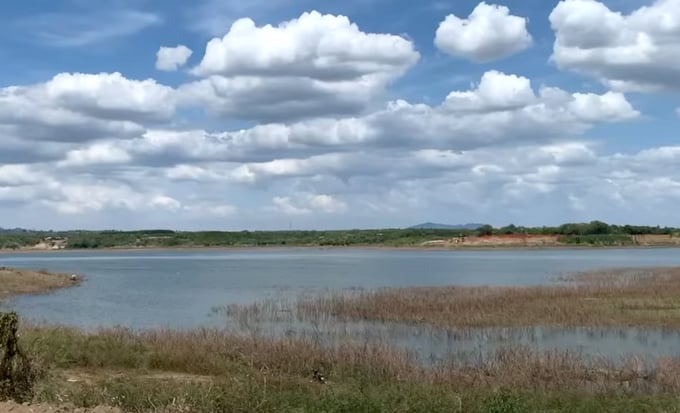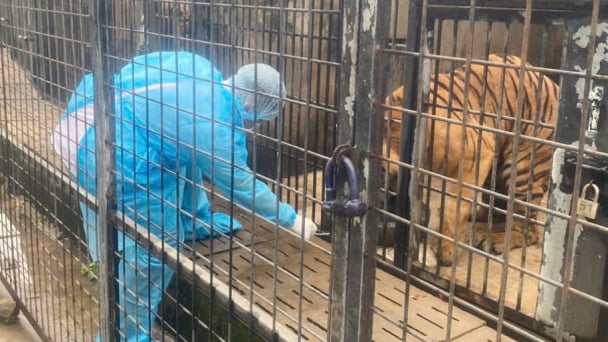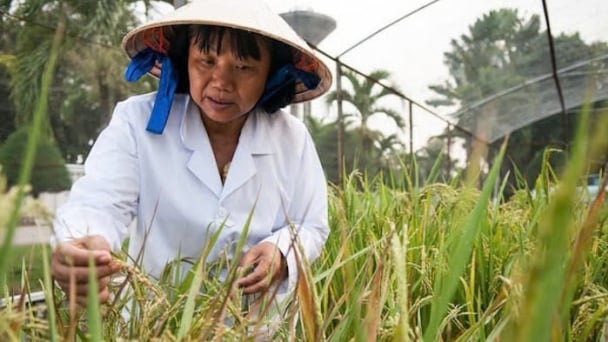May 17, 2025 | 10:14 GMT +7
May 17, 2025 | 10:14 GMT +7
Hotline: 0913.378.918
May 17, 2025 | 10:14 GMT +7
Hotline: 0913.378.918

El Nino continues to occur in the Southeast into March. Photo: Son Trang.
According to Mr. Nguyen Van Tai, Director of the Hydrometeorological Station of Ba Ria - Vung Tau province, for many days, there has been no rain in the province, the weather has been sunny and dry. Prolonged hot weather causes the water resources of rivers and streams in Ba Ria-Vung Tau to continue declining, leading to the risk of drought and water shortage in some areas.Facing that situation, the Ba Ria - Vung Tau Hydrometeorological Station has proposed that localities in the province need to use water resources economically and effectively to prevent the possibility of drought, lack of water for crops, the risk of fire, explosion, fire in residential areas and forest fires.
Not only Ba Ria-Vung Tau, the risk of drought and water shortage is threatening many agricultural production areas in many other provinces in the Southeast region.
According to the National Center for Hydrometeorological Forecasting, El Nino continues until March in the Southeast; it gradually weakens and switches to a neutral state between April and June 2024, with a probability of 75 - 80%.
Due to the influence of El Nino, the common weather forecast for March in the Southeast region is very little rain. In April, rainfall in this area is forecast to be 30 - 60mm lower than the average for many years.
In May, the total rainfall is forecast to be 15 - 30% short of the average for the same period. By June, the total rainfall is expected to be approximately equal to the annual average for the same period.
While rainfall is deficient and will be in short supply in the coming months, the average temperature in the Southeast from the beginning of the year until now has always been higher than the average for many years during the same period.
Mr. Do Duc Dung, Director of the Southern Institute of Irrigation Planning, said that by mid-March, water resources in irrigation reservoirs in the Southeast region reached an average of 42 - 83% of design capacity. In the winter-spring crop of 2023-2024, the total production area in irrigation works in the river basins of the Southeast region is 110,511 hectares, including 48,362 hectares of rice. Water resources at 48/48 reservoirs in the Southeast region can meet 100% of agricultural production and water supply according to design tasks.
However, the Southeast region is in the peak period of the 2023-2024 dry season. In prolonged hot weather, local water shortages may occur at some minor projects or degraded structures due to lake sedimentation.
In addition, 5,000 - 7,000 hectares of agricultural production are forecast to be at risk of water shortage in areas outside irrigation works. Of which, Binh Phuoc has 3,000 - 4,000 hectares, Dong Nai 1,000 - 2,000 hectares, and Ba Ria - Vung Tau about 1,000 hectares. Areas outside the water supply scope of the CTTLs need to closely monitor the weather and water sources to minimize damage when the water source is not guaranteed. Take advantage of pumping and storing water when there are water resource conditions.
Currently, in Binh Thuan province, there is a prolonged heat wave with high temperatures, low humidity, and rapid evaporation, reducing the large amount of water in the lake.
According to Binh Thuan Irrigation Works Exploitation Company Limited, the current amount of helpful water in irrigation reservoirs in the province is 133/364 million m³, reaching 37% of design, 46 million m³ lower than the same period. The current amount of helpful water in hydropower reservoirs is 570/774 million m³, reaching 74% of the design, 150 million m³ higher than last year.
In response, Mr. Nguyen Huu Phuoc, Deputy Director of Binh Thuan Department of Agriculture and Rural Development, said that the Provincial People's Committee has issued a document directing the implementation of specific solutions to prevent and combat drought, water shortage, and saltwater intrusion, serving agricultural production and livelihoods in the dry season of 2024.
According to the Southern Institute For Water Resources Planning (SIWRP), during the period of severe water shortage (common in late March and April), areas with upstream hydroelectric reservoirs in the Southeast need to make plans in coordination with water developers. This hydroelectric generator increases discharge through electricity generation to create a water source for downstream areas. The main reservoirs in the Dong Nai River basin must operate following the Inter-Reservoir Operation Procedure in Decision No.1895/QD-TTg of the Prime Minister, ensuring the operation of water discharge to the downstream area to ensure maintenance of water quality to maintain minimum flow behind the dam according to regulations.
Translated by Tuan Huy

(VAN) Food waste has become a serious issue in modern society, especially in rapidly urbanizing and developing cities like Hanoi.
![Multi-channel, multi-directional Vietnamese agricultural markets: [7] Deep processing makes global reach easy](https://t.ex-cdn.com/nongnghiepmoitruong.vn/608w/files/huytd/2025/05/16/2946-che-bien-sau-chia-khoa-vang-nang-tam-nong-san-viet-tren-ban-do-the-gioi-080603_110-093858.jpg)
(VAN) The application of deep processing technology is helping Vietnamese agricultural products enhance their value, create competitive advantages, and open doors to conquer global consumers.
![Multi-channel, multi-directional Vietnamese agricultural markets: [6] Agri products go online](https://t.ex-cdn.com/nongnghiepmoitruong.vn/608w/files/content/2024/12/10/1-113313_954.jpg)
(VAN) Bringing agri products onto e-commerce platforms is an effective way to build a brand that many businesses, cooperatives, and agricultural production households are doing.

(VAN) Veterinary training should focus on quality, not just quantity. Veterinarians also need more options to pursue specialized training.

(VAN) The veterinary industry needs to be viewed objectively and further invested in to properly demonstrate its role and importance in the new context.

(VAN) The number of veterinarians graduating each year is not enough to meet actual needs, hence a difficult problem for the growing livestock industry.

(VAN) The strategic partnership between Cambodia, the Philippines, Vietnam, and CGIAR ensures that innovative solutions effectively address national priorities for food system development.